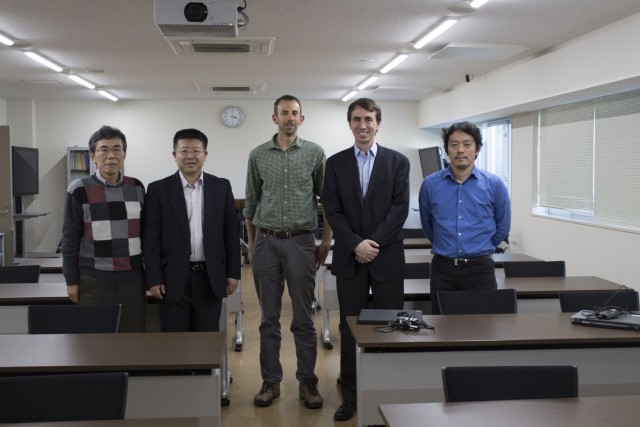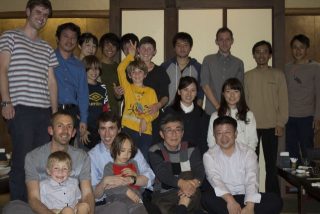特別セミナー: Andrew Kennedy, Mark Hemer and Sheng Dong
- 日 時:11月5日13:00-15:00
- 場 所:宇治キャンパスS-519D
- 話題提供者
- Storm Surge, Runup, and Damage during Recent Tropical Cyclones
- Andrew Kennedy (University of Notre Dame)
- Wind waves in a variable and changing climate
- Mark Hemer (CSIRO)
- Bivariate distribution based on copula function and their applications
- Sheng Dong (OUC, China)
- Storm Surge, Runup, and Damage during Recent Tropical Cyclones
Abstracts
Storm Surge, Runup, and Damage during Recent Tropical Cyclones
Andrew Kennedy
Recently, tropical cyclones have caused widespread damage to coastal communities in many parts of the world. However, these events may be used as case studies to examine important storm hydrodynamic processes and their impacts, and to use these lessons for future storms. This talk presents field data and numerical simulations for Hurricane Ike (2008), which deeply flooded large sections of coastal Texas and wiped clean entire communities; Hurricane Sandy (2012), which caused large damage along the densely populated Mid-Atlantic region of the United States; and Super Typhoon Haiyan (2013), which featured large surge and extreme runup on the Philippine islands of Leyte and Samar.
Topics to be presented include very high resolution wave and surge hindcasts of Hurricane Sandy and Ike using parallel SWAN+ADCIRC simulations; associated damage surveys and analysis in coastal Texas and New Jersey; and comparison of the relevant processes, which were quite different. Field surveys from Super Typhoon Haiyan show the impacts of extreme runup, which is not accounted for as well as storm surge in many design standards.
Wind waves in a variable and changing climate
Mark Hemer
The Coordinated Ocean Wave Climate Project (COWCLIP) was established in 2011 within the Joint Commission of Oceanography and Marine Meteorology (JCOMM) Sessional Workplan, with the aim to raise the profile of wind-waves as a variable in the global climate system, both to identify regions at risk of future changes in wave climate and evaluate the confidence of the community developed projected changes to global wave characteristics, and investigate the influence of waves in the coupled ocean-atmosphere climate system.
In the initial phase of COWCLIP, an ‘ensemble of opportunity’ of wave climate projection studies was compiled in order to provide the first community derived projections of global wave climate change under future 21st Century greenhouse gas emission scenarios. Considerable variance was identified between the studies in the ensemble, but the sample space was insufficiently sampled across the potential sources of variance to identify which components – emission scenario, GCM forcing, or wave field methodology – dominated.
The second phase of COWCLIP has now commenced, and this designed experiment aims to overcome the shortcomings of the initial phase. Some preliminary results of the second phase will be presented.
Bivariate distribution based on copula function and their applications
Sheng Dong
This presentation introduces four kinds of novel bivariate distributions based on bivariate normal copula, Gumbel-Hougaard copula, Clayton copula and Frank copula. These joint distributions consist of two marginal univariate extreme value distributions. Considering the occurrence frequency of typhoons, four types of Poisson bivariate compound distributions are further developed, on these novel bivariate distributions and on bivariate compound extreme value theory.
Bivariate Copulas are presented to construct joint probability distribution of annual maximum wave height and corresponding wind speed loading on a jacket platform in Bohai Sea. Under the constraints of structural responses, such as base shear, overturning moment or deck displacement, the joint design values of wave height and wind speed are estimated. Results show that the joint return values by new models are lower than those by independent probability model.
Groups of disaster-induced typhoon processes in Qingdao area are selected and the joint distribution of extreme water level and corresponding significant wave height in the same typhoon processes are established using the Poisson bivariate compound distributions. The results show that all these four distributions are good enough to fit the original data. A novel grade of disaster-induced typhoon surges intensity is established based on the joint return period of extreme water level and corresponding significant wave height, and the disaster-induced typhoons in Qingdao verify this grade criterion.



